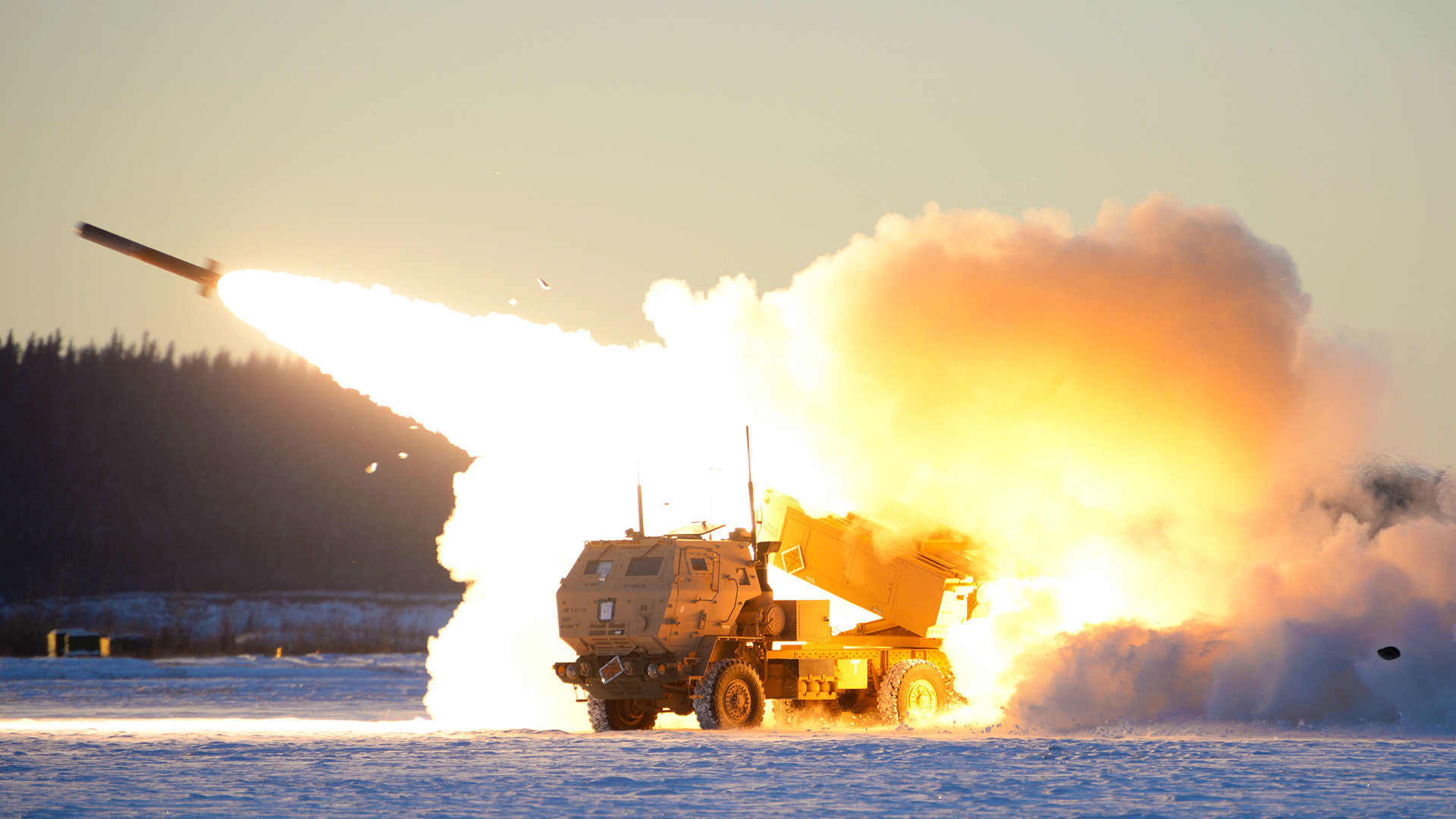

It’s no secret at this point that Russia’s invasion of Ukraine is best understood, to put it politely, as a clusterfuck. The Russian air force hasn’t been able to neutralize Ukraine’s jets, Ukrainian troops are knocking out Russian tanks with ease, and Russia’s mobilization of reserve forces has resulted in soldiers shooting each other while still in whatever limited training the Russian military has to offer.
To add insult to injury, as a senior Defense Department official recently told Politico, the Russian military has thus far failed to destroy a single one of the prized High Mobility Artillery Rocket Systems (HIMARS) that the United States has supplied to Ukraine.
A single HIMARS can fire up to six guided artillery rockets that use infrared sensors and the Global Positioning System to lock onto moving targets up to 43 miles away. In just a few minutes, a HIMARS can fire, relocate to a new position, reload, and be ready to take out another target.
Subscribe to Task & Purpose Today. Get the latest military news, entertainment, and gear in your inbox daily.
Since they first arrived in Ukraine in June, the HIMARS have been put to good use against Russian forces. The Ukrainian military has used them to strike command posts and ammunition depots, disrupt concentrations of Russian troops and take out senior officers. Indeed, the HIMARS may very well have been involved in an attack that targeted pro-Kremlin political officials meeting in the occupied Ukrainian city of Kherson in September.
“What you see is the Ukrainians … actually systematically selecting targets and then accurately hitting them, thus providing this precise method of degrading Russian capability,” a senior U.S. defense official told reporters in July.
In a conflict that has often been defined by massive artillery barrages, the HIMARS has even spawned a cottage industry of internet memes remarking on the success of the artillery system, like “HIMARS o’clock,” which refers to those celebrated times when successful HIMARS strikes occur.
Russia has, of course, claimed to have effectively countered the HIMARS threat, at one point claiming that more than 100 HIMARS rockets had been destroyed in Ukraine’s Dnipropetrovsk region (Ukraine currently has only 16 U.S.-supplied HIMARS in its arsenal).
To protect their HIMARS, Ukraine has been resorting to an old, simple tactic – fake mockups to deceive Russian drones. As advanced as the actual HIMARS is, a wooden replica looks very similar from 1,000 feet in the air. Apparently, it’s working out well, as Ukraine’s HIMARS remain undefeated on the battlefield. There are at least 18 more HIMARS coming, too, as the U.S. continues to send more weapons systems and ammunition to Ukraine.
As for Russia’s inability to successfully knock out a single HIMARS, who knows: perhaps this is why at least one Ukrainian system is smiling all the time.
The latest on Task & Purpose
- Air Force claims ‘no intent by the pilots’ to draw sky penis near Russian base in Syria
- Dramatic video shows why Russian helicopters are sitting ducks in Ukraine
- The Marine Corps’ fitness test from the 1950s wasn’t that hard
- Navy jet considered ‘beyond repair’ returns to flight 5 years after mid-air collision
- We salute the Marine who got promoted at a fried chicken restaurant on base
Want to write for Task & Purpose? Click here. Or check out the latest stories on our homepage.